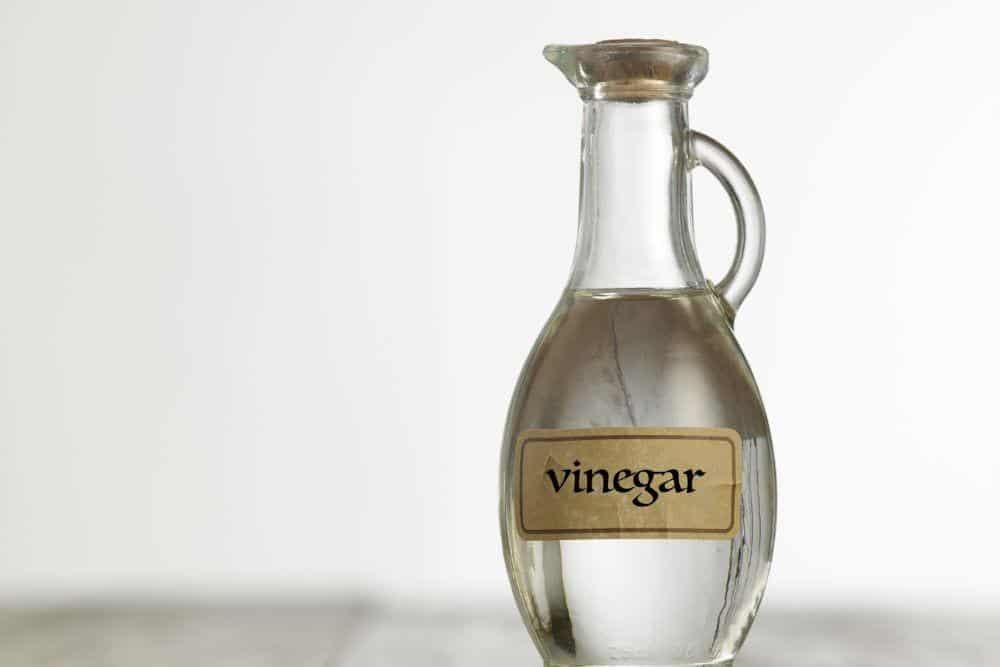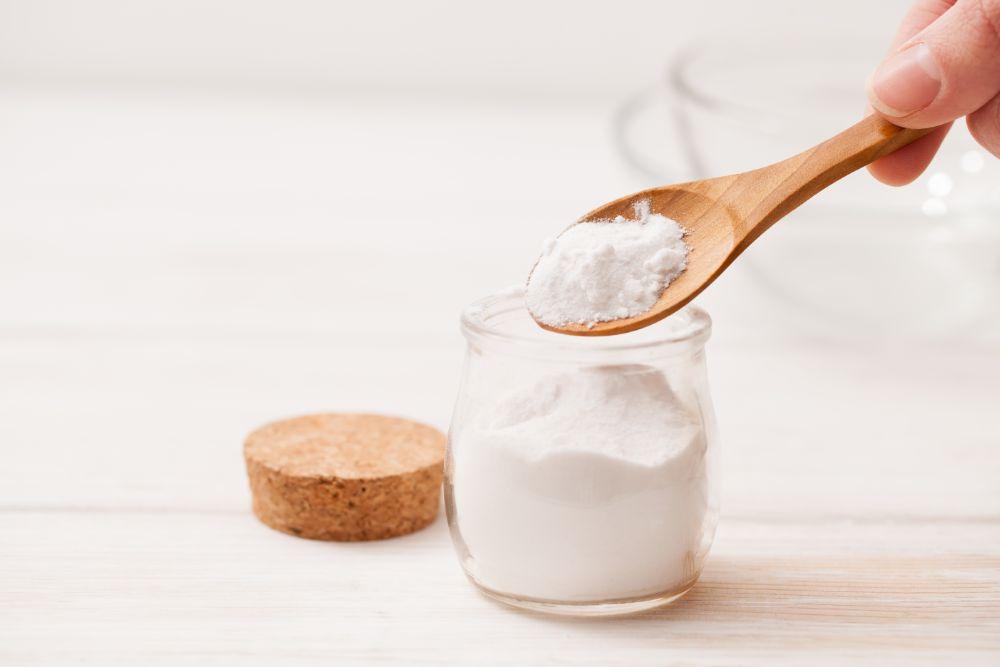Are your old Tupperware containers orange? Do they smell like onions? Whatever Tupperware dilemma you’re facing, there is a solution! Consider this your complete guide to cleaning old Tupperware containers to make them look brand new.
Below are the top three ways to clean any Tupperware you have. These methods are excellent for not just cleaning food off your containers but also for removing old stains and eliminating unpleasant odors that may linger.
When you Google how to clean many things, from flip flops to humidifiers, the answer is often white vinegar!

White Vinegar is an Excellent Cleaning Agent
To clean a stained or smelly Tupperware container with vinegar, follow the steps below:
Any stains or bad smells should be a distant memory. But there may be a strong white vinegar smell. If this is highly noticeable or bothers you, clean the container with dish soap again, or run it through the dishwasher.
The acidity in lemon juice can help lift stains and eliminate odors trapped in your Tupperware containers. For this, you can use bottled lemon juice, or you can use fresh lemon juice. But since you won’t be eating this, it’s cheaper to use lemon juice from the bottle. But fresh juice will be more acidic and effective.
Follow the simple steps below to clean old Tupperware containers with lemon juice:
For the worst stains, soak the Tupperware overnight, but an hour or so is plenty to remove stains and funny smells. And often, this method leaves your Tupperware with a fresh lemony scent!
Ah, yes, baking soda! Baking soda seems to be the catch-all of cleaning products, and stained or smelly Tupperware is no exception. The baking soda method is ideal for super old stains and Tupperware heading for the trash. But using baking soda does require a bit more elbow grease.

Baking Soda is Effective at Cleaning Tough Stains
Learn the steps below for cleaning old Tupperware containers with baking soda:
The longer and more vigorously you scrub the Tupperware with the paste, the better the results will be. Baking powder is not a suitable substitute, so it's baking soda or nothing!
TikTok loves to offer users new and innovative hacks for dealing with daily plights, such as stains and smells on your Tupperware. User @adikempler shared her hack for getting rid of Tupperware stains. Below are her instructions:
According to this TikToker, the stains and smells should be gone after this. You can give this viral method a try, but no promises!
Plastic Tupperware is typically the victim of stains and funny smells. But glass, ceramic, and other materials can get stained or hold up in icky smells. You can learn about cleaning all types of Tupperware in the section below.
Surprisingly, plastic is often the most challenging Tupperware material to clean and maintain; this is because plastic can easily absorb and trap odors and discoloration. The methods listed above are specifically for cleaning plastic, so give those a try before you throw away your plastic Tupperware.
Glass containers, like Pyrex, are the least likely to get stains because the material rarely absorbs anything. However, glass can carry musty odors if not stored and cleaned properly. Try to keep glass Tupperware as dry as possible and store lids separately rather than sealed on the container.
Ceramic and porcelain food storage is less common than plastic and glass. Unfortunately, unlike glass, ceramic and porcelain can easily take on stains, especially if the storage containers are white. And cleaning these can be more challenging than plastic, and you aren’t so willing to throw them away if the cleaning is unsuccessful.
For stubborn stains, use a mixture of vinegar, baking soda, and some emphatic scrubbing. As for odors, make sure you store these similarly to glass: completely dry and without a sealed lid.
If you consider your Tupperware vintage, you should take extra care when cleaning it. Luckily, vintage plastic Tupperware tends to stain less because it's thicker plastic. But ceramic, porcelain, or glass vintage Tupperware can stain.
Try to avoid using any harsh chemicals on vintage Tupperware. Distilled white vinegar is usually the gentlest and most effective option for old and sentimental vintage Tupperware.
Cleaning old Tupperware containers can present several dilemmas. Food storage containers may smell funky, look dirty, or feel gross. These problems have many solutions, so it’s wise to diagnose the problem so you can use the most effective method for your particular Tupperware dilemma.
Stains are one of the number one problems that lead people to throw away perfectly decent Tupperware.
The most common foods and ingredients that stain Tupperware are as follows:
Tomato sauce: Probably the most frequent Tupperware staining comes from a hearty tomato sauce. To lift these stains, white vinegar or lemon juice is typically the most effective strategy.

Tomato Sauce is A Major Culprit When it Comes to Staining Tupperware
Curry powder/sauce: For curry stains, you should use baking soda to scrub away these stains and renew your food storage container.
Cumin: Cumin is a super yellow spice that tends to stain everything it touches, even countertops sometimes. To clean a Tupperware container stained with cumin, you should use the baking soda method and try to scrub it away.
Turmeric: Turmeric is a bold orange spice that stains similarly to cumin. You should also use the baking soda method for turmeric stains.
Greasy food: Grease can seep into plastic containers and stain them. To remove grease stains from food containers, you should soak the Tupperware in white distilled vinegar.
Wine: Wine doesn’t usually make its way into Tupperware containers, but if it does, red wine can leave stains. The baking soda or vinegar method usually lifts wine stains best.
Food coloring: If you store cake frosting or another food with a lot of food coloring, these can stain storage containers, discoloring them. Luckily, food coloring is not super acidic, so easy to remove with any of the methods mentioned above.
The vinegar method is the best method for dealing with smells trapped in your Tupperware containers. White vinegar has a potent smell that can pull out and eliminate practically any odor. When dealing with smells, use hot water rather than warm water for the best results.
Common smells trapped in Tupperware are:
If there’s a sticky substance stuck to your Tupperware, you likely need to give it some elbow grease. Do not use steel wool or other harsh scrubbers on Tupperware that may scratch it or make it even more porous and susceptible to stains.
The baking soda method is often the best for removing residue or food remnants. Make sure you use super hot water to lift the food off.
If you want to prevent stains, smells, and other problems with your Tupperware, follow the care tips listed below:
If you tried all three of these methods, plus the TikTok hack, and even tried bleach, and the stains or smell are persistent, it’s time to move on.
You should also toss Tupperware if you notice any holes, cracks, chips, or warping. Plastic Tupperware are often the most likely to be thrown away, so many people prefer glass, ceramic, or porcelain as they’re more reliable.
Below are some frequently asked questions and more information on caring for Tupperware and cleaning old Tupperware containers.
Even though plastic containers say microwave-safe, your food could absorb the BPA and Phthalates in plastics.
However, microwaving most glass, and ceramic is safe just look for the microwave-safe label on the container or consult the manufacturer of the container.
You can freeze all types of Tupperware. Even glass and ceramic will not crack, as long as you avoid thermal shock. So don’t put hot food in a glass container and then immediately in the freezer, because it will likely crack.
You shouldn’t. But bringing bleach anywhere near containers and flatware is risky. The three methods detailed above are preferred because they use safer ingredients to clean the containers that store your food.
The best kind of Tupperware is a matter of personal preference, but many people opt for glass because it’s the least likely to stain and keeps food at the desired temperature for longer.
Ideally, all Tupperware should last you a lifetime. But plastic can give out after a few years, and thin plastics sometimes only last about a year.
